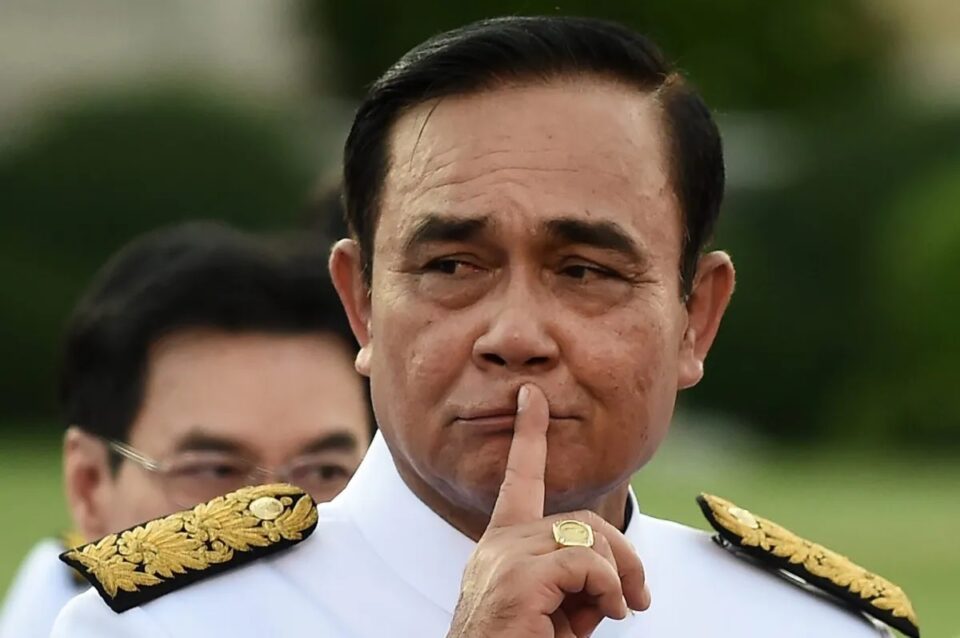Thailand’s modern political history is littered with examples of parties set up, led or supported by governing military figures to serve as a democratic vehicle to legitimize their stay in power.
The current ruling Palang Pracharath Party was described as one of these “pro-military” parties when it was established in March 2018, just a year before the 2019 general election, although virtually all of its top executives were civilians.
The party was led by former ministers from the post-coup government of Gen Prayut Chan-o-cha, and it later nominated him as its sole prime minister candidate for the 2019 election. At that time, Prayut was heading the junta-led administration formed after the military coup that he led in May 2014.
First military party
Sixty-seven years ago, then-prime minister Field Marshal Plaek Phibunsongkhram created the Seri Manangkhasila Party in September 1955. It became the first party registered under Thailand’s first Political Parties Act, which had gone into force a few days earlier.
The party was led by Plaek himself, with his right-hand man — national police chief Pol Gen Phao Siyanon — serving as its secretary general, and Army chief Gen Sarit Thanarat as deputy leader (he would become a field marshal in 1956). Top executives of the party were essentially key figures from the government formed after the 1947 military coup, which was staged by Plaek’s allies while he was serving time for war crimes.
Seri Manangkhasila won the 1957 general election, securing a majority in the 160-seat House of Representatives amid allegations of vote fraud and cheating. Observers have called this one of the dirtiest elections in Thai history.
Sarit’s political parties
While serving as deputy leader of his boss’s party, Sarit backed the foundation in June 1957 of a new political party called Saha Phum as a vehicle formany Seri Manangkhasila MPs unhappy after being denied ministerial posts. This led to instability in Plaek’s government.
Sarit overthrew the administration in September 1957 and installed a civilian-led government. But after the general election in December of that year, his Saha Phum Party failed to gather enough support to form a government.
That prompted Sarit to disband Saha Phum and set up a new party called Chart Sangkhom for MPs and lawmakers from other parties loyal to him. Sarit became the leader of the new party, with his trusted aides Lt-Gen Thanom Kittikachorn serving as deputy leader and Lt-Gen Praphas Charusathien as secretary-general. Both Thanom and Praphas would later hold the rank of field marshal.
Chart Sangkhom managed to form a new government in January 1958 and Sarit picked Thanom as prime minister. However, the new administration was shaken by infighting and wayward politicians.
In October that year, Sarit opted to stage a coup to overthrow the government and abolished the Constitution and the Political Parties Act. He became prime minister in February 1959 and would serve as head of his junta for almost five years until his death in December 1963.
Thanom’s party
Following Sarit’s death, his right-hand man Thanom took over as junta chief and prime minister. When the new charter and parties law came into force in 1968, Thanom set up a new political party, Saha Pracha Thai, in October that year and became the party leader himself. Other party executives were his government ministers and political cohorts, including former prime minister Pote Sarasin, who led a short-lived government after the 1957 coup.
The first general election after a decade under military rule was held in February 1969. Thanom’s party won and formed a coalition government, with him serving as prime minister.
However, frequent conflicts in the coalition due to political bargaining by unruly MPs prompted the field marshal to stage a coup against his own government in November 1971. Thanom would rule through his junta for almost two more years before the October 1973 student-led uprising, which forced him to step down.
Igniting ‘Black May’ incident
In February 1991, a military clique called the National Peace Keeping Council (NPKC) staged a coup to overthrow the elected government of Chatichai Choonhavan. Just two months before the March 1992 general election, Samakkhitham, a new political party linked to the coup-makers, was set up.
The party won the election and managed to form a coalition government. However, its decision to name Gen Suchinda Kraprayoon, one of the coup-makers, as the prime minister led to massive street protests. Protesters were angry at Suchinda’s failure to keep his promise of not taking the premiership.
The protests were brutally suppressed and many protesters were killed in a military crackdown that would later be known as the Black May incident. Suchinda was forced to step down following a royal intervention.
Not lasting long
Military-backed parties were short-lived, most of them lasting less than two years and only one surviving for longer than three years. They ceased to exist after the military leaders or groups they associated with lost their power.
Seri Manangkhasila was gone after one year and 11 months, Saha Phum 13 months, and Chart Sangkhom nine months. Saha Pracha Thai lasted three years and two months while Samakkhitham disappeared after just five months.
By Thai PBS World’s Political Desk




